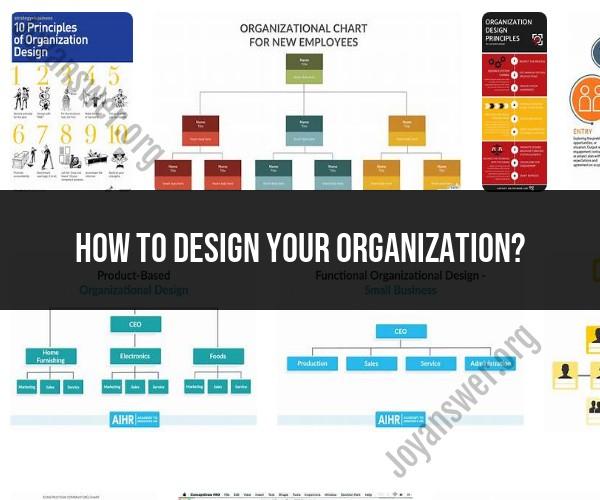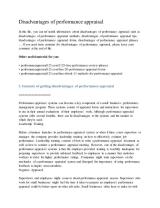How to design your organization?
Designing an organization involves creating a structure and framework that allows it to operate efficiently and effectively. The process of organizational design typically considers the following key aspects:
Define Your Purpose and Strategy:
- Clearly articulate your organization's mission, vision, and strategic objectives. These serve as the foundation for the design.
Organizational Goals and Objectives:
- Set specific, measurable, achievable, relevant, and time-bound (SMART) goals that align with your strategy.
Assess Your Current State:
- Evaluate your existing organizational structure, processes, and culture to identify strengths, weaknesses, and areas for improvement.
Determine the Core Functions:
- Identify the essential functions or activities required to achieve your goals and fulfill your mission. These will form the basis of your organizational structure.
Choose the Organizational Structure:
- There are various organizational structures to consider, including:
- Functional Structure: Organized by specific functions (e.g., marketing, finance, operations).
- Divisional Structure: Divided into separate divisions or business units based on products, regions, or customer segments.
- Matrix Structure: Combines functional and divisional structures to balance efficiency and flexibility.
- Flat Structure: Few hierarchical levels, promoting a more collaborative environment.
- Hierarchical or Tall Structure: Multiple levels of management for clear reporting lines.
- Network Structure: Relies on external partnerships, contractors, and freelancers.
- Choose the structure that best suits your goals, size, and industry.
- There are various organizational structures to consider, including:
Allocate Roles and Responsibilities:
- Clearly define job roles and responsibilities for each position within the organization. Ensure roles align with the chosen structure.
Establish Reporting Lines:
- Create a clear hierarchy of reporting lines, indicating who reports to whom. This reduces confusion and enhances accountability.
Consider Geographic and Cultural Factors:
- If your organization operates in multiple regions or countries, consider how cultural differences and geographic dispersion may impact your structure and processes.
Promote Collaboration and Communication:
- Implement communication channels and collaboration tools to facilitate information flow and teamwork across the organization.
Develop Policies and Procedures:
- Create standard operating procedures (SOPs) and policies that guide decision-making, operations, and behavior within the organization.
Evaluate Resource Allocation:
- Allocate resources (e.g., budget, manpower) based on the strategic priorities of each department or division.
Change Management:
- Recognize that organizational design often requires changes in culture, processes, and employee roles. Implement change management strategies to ease the transition.
Test and Iterate:
- Pilot the new organizational structure and gather feedback from employees. Be prepared to make adjustments based on what works best.
Measure and Monitor:
- Establish key performance indicators (KPIs) to assess the effectiveness of the new structure. Regularly monitor and evaluate performance against these metrics.
Continual Improvement:
- Organizational design is not a one-time event. Continuously assess and refine your structure to adapt to changing market conditions and organizational needs.
Employee Involvement:
- Involve employees in the design process. Their insights and feedback can lead to more practical and effective solutions.
Remember that there is no one-size-fits-all approach to organizational design. It should be tailored to your organization's unique goals, culture, and environment. Seek input from experts, employees, and stakeholders, and be prepared to adapt as circumstances change. Organizational design is an ongoing process that should support your organization's growth and evolution over time.
Organizational Design: Creating a Blueprint for Your Business
Organizational design is the process of shaping the way your organization operates, to help you to pursue your strategies and meet your goals. It involves making decisions about the structure of your organization, the roles and responsibilities of your employees, and the processes and systems that your organization will use.
Effective organizational design is essential for business success. It can help you to:
- Improve communication and collaboration
- Increase efficiency and productivity
- Boost innovation and creativity
- Enhance employee engagement and satisfaction
- Achieve your strategic goals
Designing Your Organization for Success: Key Steps and Considerations
Here are some key steps and considerations for designing your organization for success:
- Understand your business strategy. What are your organization's goals? What are your key strengths and weaknesses? What are the opportunities and threats in your environment? Your organizational design should be aligned with your business strategy in order to help you achieve your goals.
- Define your organizational structure. The organizational structure is the framework that defines the roles and responsibilities of employees and the relationships between different departments and teams. There are many different types of organizational structures, so it is important to choose one that is appropriate for your business and your industry.
- Identify your key roles and responsibilities. Once you have defined your organizational structure, you need to identify the key roles and responsibilities of your employees. This will help you to ensure that everyone knows what they are supposed to be doing and that there is no overlap in responsibilities.
- Design your processes and systems. In addition to your organizational structure and key roles and responsibilities, you also need to design the processes and systems that your organization will use. This includes things like your workflow, communication systems, and IT infrastructure.
Structure and Strategy: How to Design Your Business for Optimal Performance
The structure of your organization should be aligned with your business strategy. For example, if your business strategy is to focus on innovation, you may want to create a decentralized organizational structure that allows for greater autonomy and creativity. If your business strategy is to focus on efficiency, you may want to create a more centralized organizational structure with clear lines of authority.
Here are some tips for designing your business for optimal performance:
- Create a clear and concise organizational structure. Your organizational structure should be easy to understand for all employees. It should also be flexible enough to adapt to change as your business grows and evolves.
- Define clear roles and responsibilities. Each employee should know what they are supposed to be doing and who they are responsible to. This will help to avoid confusion and conflict.
- Empower employees to make decisions. Employees who are empowered to make decisions are more likely to be engaged and motivated. They are also more likely to come up with innovative ideas.
- Create a culture of collaboration. Encourage employees to collaborate with each other and to share ideas. This will help to improve communication and innovation.
- Measure and track your results. It is important to measure and track the results of your organizational design to ensure that it is effective. This will help you to make adjustments as needed.
By following these tips, you can design your business for optimal performance and achieve your strategic goals.











